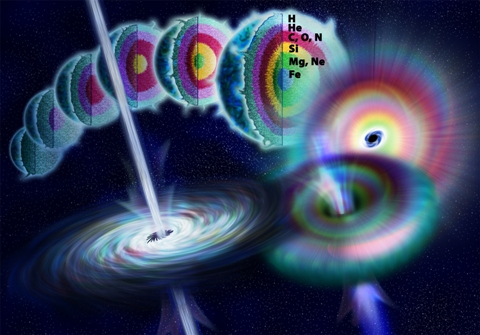Introduction
Asteroids
Gamma Ray Explosions
Expansion of the Universe
Our Sun
References

Gamma Ray Explosions/Bursts

Picture showing different types of gamma ray bursts
Gamma ray bursts are short-lived burst of gamma-ray photons, the most energetic form of light. At least some of them are associated with supernovae, the explosions marking the deaths of massive stars.
They last anywhere in between a few milliseconds to several minutes; gamma ray bursts shine a million trillion times as bright as the sun, making them briefly the most brightest source of cosmic gamma-ray photons in the observable Universe. GRBs are detected roughly once per day from random directions of the sky.
Gamma-ray bursts are separated into two classes: long-duration bursts and short-duration bursts. Long duration bursts last more than 2 seconds and short-duration bursts last less than 2 seconds. Long duration bursts are followed by several days of X-ray afterglow. Astronomers think that long and short duration GRBs are created by fundamentally different physical properties.

Picture showing gamma ray bursts images taken from Hubble Space Telescope
One line of research has investigated the consequences of Earth being hit by a beam of gamma rays from a nearby (about 500 light years) gamma ray burst. This is motivated by the efforts to explain mass extinctions on Earth and estimate the probability of extraterrestrial life.
It seems to be that the damage that a gamma ray burst could do would be limited by its very short duration, but a sufficiently close gamma ray burst could do serious damage to the atmosphere, perhaps wiping out the ozone layer and triggering a mass extinction. The damage from a gamma ray burst would probably be significantly greater than a supernova at the same distance.
Videos
Video showing sources of gamma ray bursts